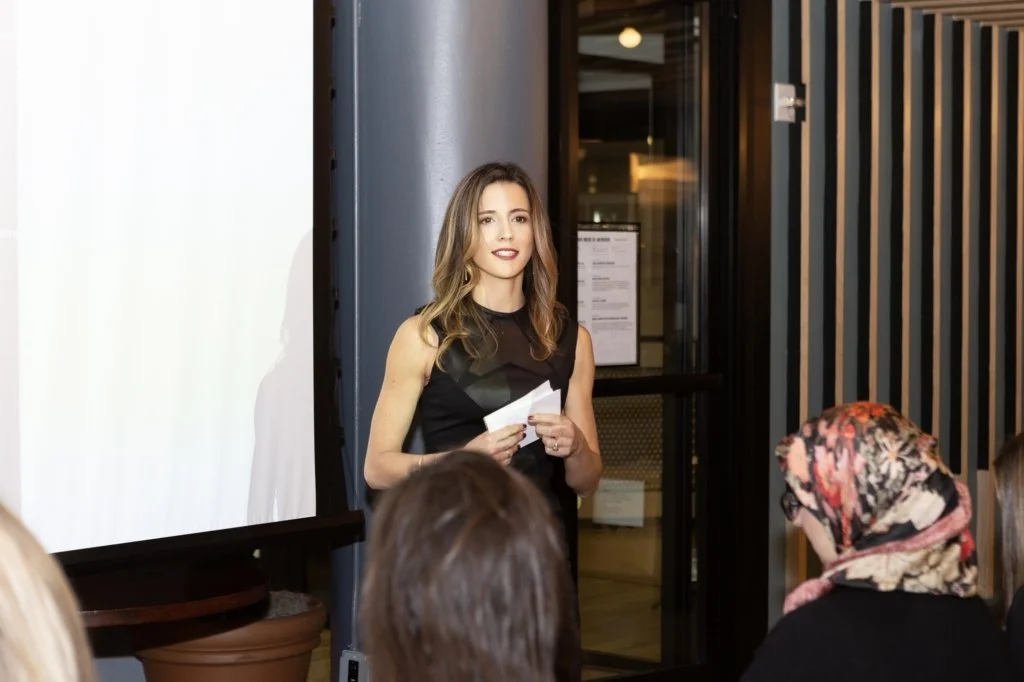Are You Ready To Ditch Your Limiting Beliefs?
Here’s how.
In my previous post, I shared an incident from my childhood that resulted in a disempowering story about my ability (or rather, my inability) to speak in public. I managed to ditch that belief eventually, learning a lot in the process, which I’d love to share with you. But first, let’s continue the story from last time, and catch up with me more than three decades later, about to give my first big talk. I need all the help I can get, so I’ve booked a couple of sessions with a public speaking coach.
Heinrich is a gentleman in his seventies. Even though we meet at his home office, he greets me wearing a suit and tie. His voice is kind. He asks me to deliver the first few minutes of my speech while he records me with a video camera set up on a tripod near his desk. The few minutes seem like ages; my palms are sweaty, and my hands are shaking as I grip my notecards. Afterward, we watch the recording together.
“You’re a natural speaker,” Heinrich says. Apparently, he didn’t notice my shaking.
“Now, that’s something I’ve never heard before.”
“You just need a few tweaks here and there. Really, you’ve got this.”
Why didn’t anyone tell me this before?
Ever since that unfortunate incident when I was ten, for my entire adult life, I’ve been telling myself that I suck at public speaking. And I’ve avoided it—and anything that had to do with leadership—at all costs. Until I found something that I really wanted to speak up about, and—what do you know?—it turns out I’m not so bad after all.
As I give my first speech in many years, I think of Heinrich’s words and relax. At the end of my talk, several people from the audience come up to thank me. I’m even told by one or two that I’m “a great speaker.” (Say what?) My heart is full, and I can’t stop smiling.
“I suck at public speaking” is an example of a limiting belief. In my previous blog post, I talk about these disempowering thoughts that prevent us from achieving our goals and potential. They are usually formed early on in life and are almost always false. They are often based on something your parents, teachers or peers told you; or they may have been something you told yourself based on a negative experience you’ve had. The most common limiting belief goes something like this: “I’m not [good, smart, young, experienced, etc.] enough.”
Five steps to ditching your limiting beliefs
Given how damaging they are, how do we get rid of these false stories? It’s simple, though not easy. It takes persistence and patience. It involves you making a decision. Here are the steps I take my clients (and myself) through when they struggle with disempowering stories that stand in their way.
Step 1: Become aware
What’s one belief about yourself that you’d like to change? Check out my previous post for details on how to identify those beliefs that hold you back.
Step 2: Ask yourself these two questions
How is this belief serving me?
There’s always a gain to holding on to a story. It may be protecting you from failure by making you procrastinate or not start something, for example.
Who would I be without this belief?
Imagine you wake up and don’t have this belief anymore. e.g. I’d be creative, fulfilled, relaxed. I’d prepare less and enjoy more. I’d try new things. I’d feel relieved, confident etc.
Step 3: Choose an alternative belief
What would you rather believe about yourself? What’s a more empowering ‘story’? What statement or statements represent the opposite of your limiting belief that you’d like to be true about yourself? e.g. I have everything I need to succeed; people appreciate me for who I am. Write it down even if it doesn’t feel so genuine at first.
Step 4: Reinforce the new belief daily
Write down the new thought/belief and decide when you will repeat it to yourself (out loud, if possible). Even one minute a day is great (e.g. when you wake up in the morning or before going to bed), several times a day is even better. At first, it may feel weird or unnatural to have that empowering belief (because the limiting belief is usually deep and old). Over time, however, and with practice, the new belief will take hold in your consciousness and change how you think about yourself and your abilities.
Step 5: Gather evidence to back up your new belief
In parallel with Step 4, start a list of pieces of evidence from your lifetime (incidents, experiences, interactions, etc.) that back up the statement you wrote down. Add one (or more!) items to your list every day. As you open up your subconscious to focus on the new, empowering belief, you will start noticing more and more evidence.
A simple process
To sum up, here are two things to keep in mind.
First, your thoughts and beliefs are your choices. It’s in your power to replace a limiting belief with an empowering one. If certain thought patterns aren’t serving you, and you want to change them, you can retrain or ‘rewire’ your brain to think other thoughts instead. It takes effort and repeated practice over time, but it is possible.
Second, shifting our beliefs and rewiring our brain is a process. It doesn’t happen overnight, but it does happen. It requires repetition and perseverance. The first few times you repeat your new belief, you will most likely feel silly; but with time, it will become more familiar to you and eventually part of how you think about yourself.
Identify the beliefs that no longer serve you and that you want to change
Choose empowering beliefs to replace them
Repeat daily to rewire your brain
Are you willing to try this on one of your beliefs?
Pick one belief. Go through the process. Let me know!
If you want a partner by your side to support you to identify and ditch your limiting stories and go after your aspirations boldly and unapologetically, I’m your person. Click here to set up a free 30-minute consultation and let’s talk!
If you’re new here, welcome to Breaking Free (my new blog)! Read my introductory post here for more information about what this blog is about and what you can expect going forward.

